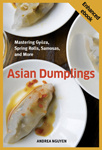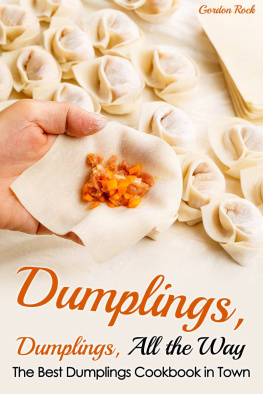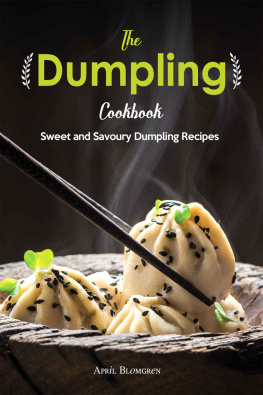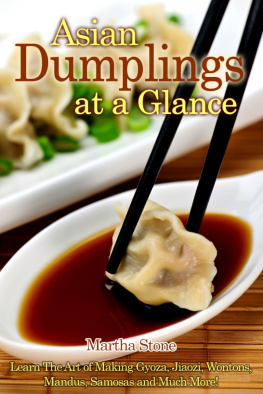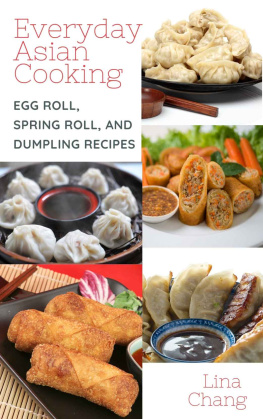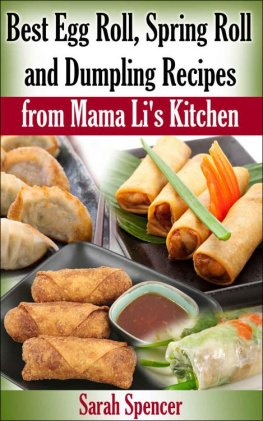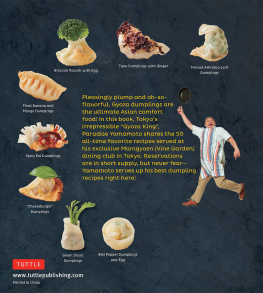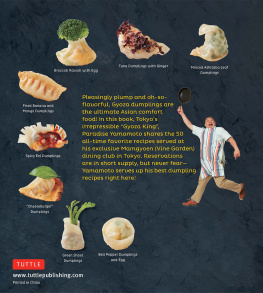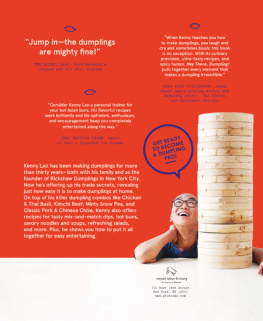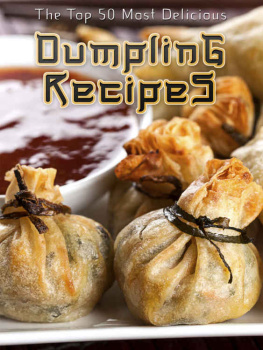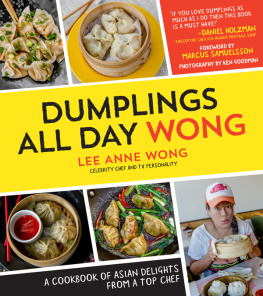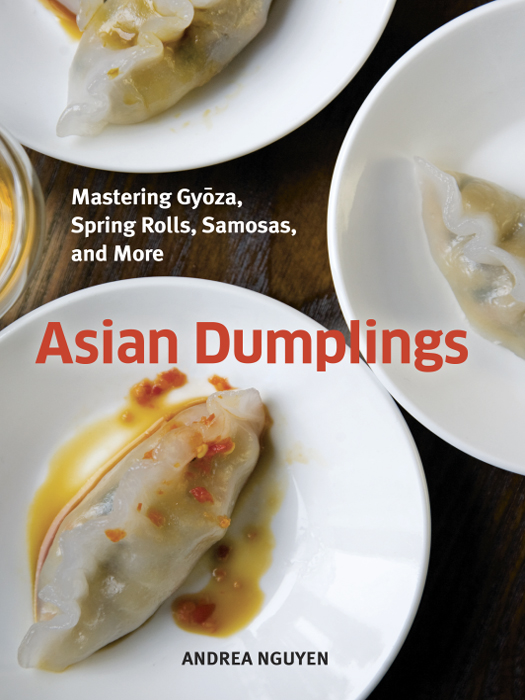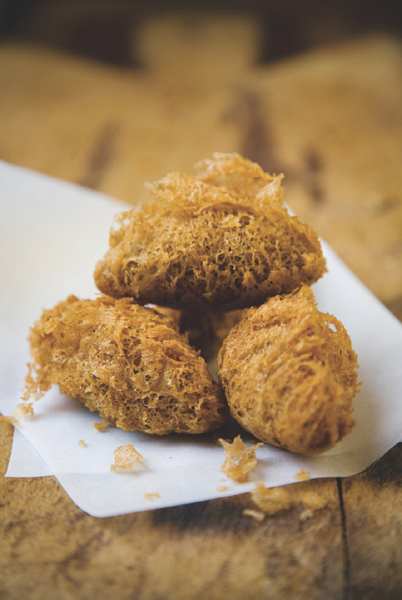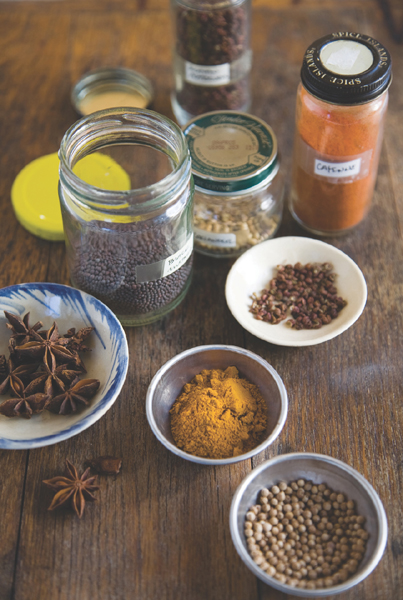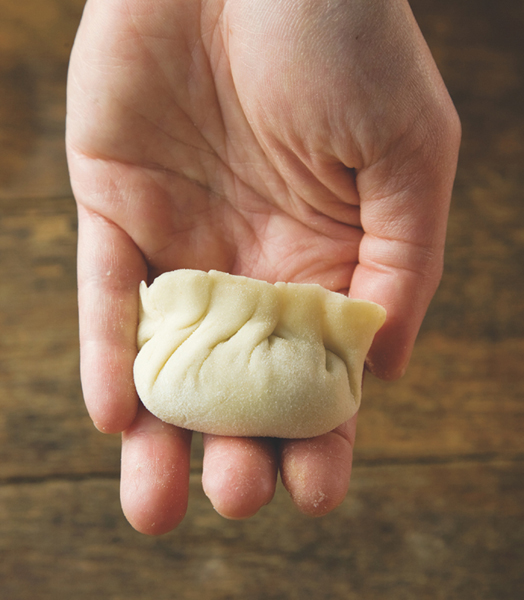Andrea Nguyen - Asian Dumplings: Mastering Gyoza, Spring Rolls, Samosas, and More
Here you can read online Andrea Nguyen - Asian Dumplings: Mastering Gyoza, Spring Rolls, Samosas, and More full text of the book (entire story) in english for free. Download pdf and epub, get meaning, cover and reviews about this ebook. year: 2009, publisher: Ten Speed Press, genre: Home and family. Description of the work, (preface) as well as reviews are available. Best literature library LitArk.com created for fans of good reading and offers a wide selection of genres:
Romance novel
Science fiction
Adventure
Detective
Science
History
Home and family
Prose
Art
Politics
Computer
Non-fiction
Religion
Business
Children
Humor
Choose a favorite category and find really read worthwhile books. Enjoy immersion in the world of imagination, feel the emotions of the characters or learn something new for yourself, make an fascinating discovery.

- Book:Asian Dumplings: Mastering Gyoza, Spring Rolls, Samosas, and More
- Author:
- Publisher:Ten Speed Press
- Genre:
- Year:2009
- Rating:5 / 5
- Favourites:Add to favourites
- Your mark:
Asian Dumplings: Mastering Gyoza, Spring Rolls, Samosas, and More: summary, description and annotation
We offer to read an annotation, description, summary or preface (depends on what the author of the book "Asian Dumplings: Mastering Gyoza, Spring Rolls, Samosas, and More" wrote himself). If you haven't found the necessary information about the book — write in the comments, we will try to find it.
Plump pot stickers, spicy samosas, and tender bo (stuffed buns) are enjoyed by the million every day in dim sum restaurants, streetside stands, and private homes worldwide. Wrapped, rolled, or filled; steamed, fried, or bakedAsian dumplings are also surprisingly easy to prepare, as Andrea Nguyen demonstrates in Asian Dumplings.
Nguyen is a celebrated food writer and teacher with a unique ability to interpret authentic Asian cooking styles for a Western audience. Her crystal-clear recipes for more than 75 of Asias most popular savory and sweet parcels, pockets, packages, and pastries range from Lumpia (the addictive fried spring rolls from the Philippines) to Shanghai Soup Dumplings (delicate thin-skinned dumplings filled with hot broth and succulent pork) to Gulab Jamun (Indias rich, syrupy sweets).
Organized according to type (wheat pastas, skins, buns, and pastries; translucent wheat and tapioca preparations; rice dumplings; legumes and tubers; sweet dumplings), Asian Dumplings encompasses Eastern, Southeastern, and Southern Asia, with recipes from China, Japan, Korea, Nepal, Tibet, India, Thailand, Vietnam, Singapore, Malaysia, Indonesia, and the Philippines.
Throughout, Nguyen shares the best techniques for shaping, filling, cooking, and serving each kind of dumpling. And she makes it easy to incorporate dumplings into a contemporary lifestyle by giving a thorough introduction to essential equipment and ingredients and offering make-ahead and storage guidance, time-saving shortcuts that still yield delectable results, and tips on planning a dumpling dinner party.
More than 40 line drawings illustrate the finer points of shaping many kinds of dumplings, including gyza/pot stickers, wontons, and samosas. Dozens of mouth-watering color photographs round out Asian Dumplings, making it the most definitive, inviting, inspiring book of its kind.
Andrea Nguyen: author's other books
Who wrote Asian Dumplings: Mastering Gyoza, Spring Rolls, Samosas, and More? Find out the surname, the name of the author of the book and a list of all author's works by series.


